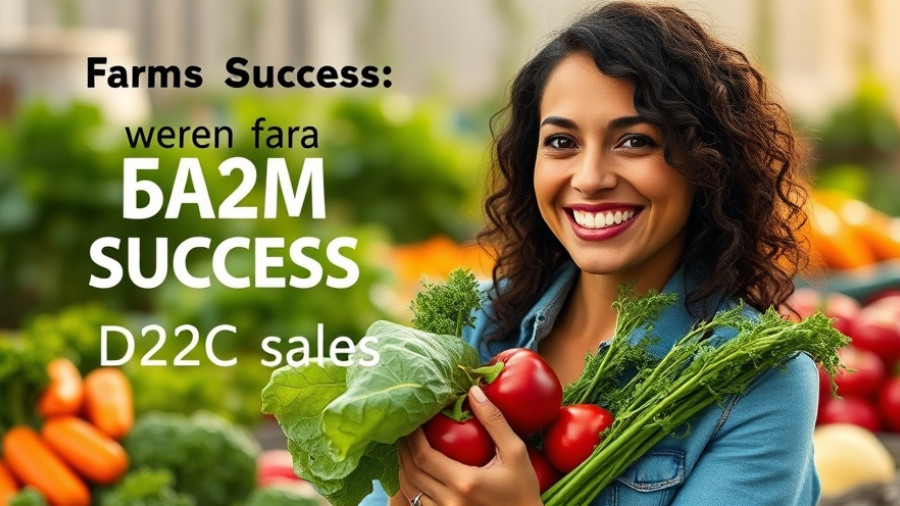
The Charm of Personal Connections
Imagine stepping into a farm stand and feeling as though you've just dropped by a friend’s house. This warm, personal touch is what sets local farms apart from large competitors in the bustling world of direct-to-consumer (D2C) sales. Farmers have mastered the art of creating a friendly atmosphere, which keeps customers coming back for more of their unique offerings.
The video How Do Farms Succeed In D2C Sales Against Large Competitors? dives into the strategies of local farmers, revealing valuable insights worth exploring.
Diverse Sales Channels for Modern Shoppers
In today’s fast-paced world, convenience is key. Successful farms understand the importance of using a mix of sales channels including on-farm stores, farmers' markets, online shops, and even social media. Offering a professional website with easy navigation and online shopping capabilities allows customers to explore products and place orders seamlessly, catering to their individual preferences.
Building Meaningful Relationships
Engagement with customers isn’t just about selling; it's about connection. Regular emails, social media updates, and sharing stories about farming practices forge a deeper bond between farms and their patrons. When customers feel valued and connected, they are more likely to choose quality local produce, even if it comes at a premium price. By communicating regularly, farms keep their customers informed and engaged, promoting loyalty and repeat business.
Emphasizing Unique Products
To rise above generic supermarket offerings, local farms often provide unique products such as heirloom vegetables, organic produce, and pasture-raised meats. These high-quality options attract health-conscious consumers who prioritize fresh food and support sustainable living. Consumers increasingly seek out choices that reflect their values, and local farms can meet that demand.
Convenience in Shopping
Simplicity is crucial in today’s shopping environment. Successful farms streamline their offerings through convenient pickup points, quick delivery routes, and innovative subscription services like community-supported agriculture (CSA). These methods reduce hassle for customers, allowing them to focus on enjoying their fresh foods.
In exploring how farms succeed in the competitive D2C landscape, the video How Do Farms Succeed In D2C Sales Against Large Competitors? presents enlightening insights into the strategies that empower farmers to thrive. By focusing on personalized service, varied sales channels, and unique offerings, local farms can effectively compete against larger corporations, ultimately contributing to a healthier food ecosystem.
 Add Row
Add Row  Add
Add 




Write A Comment